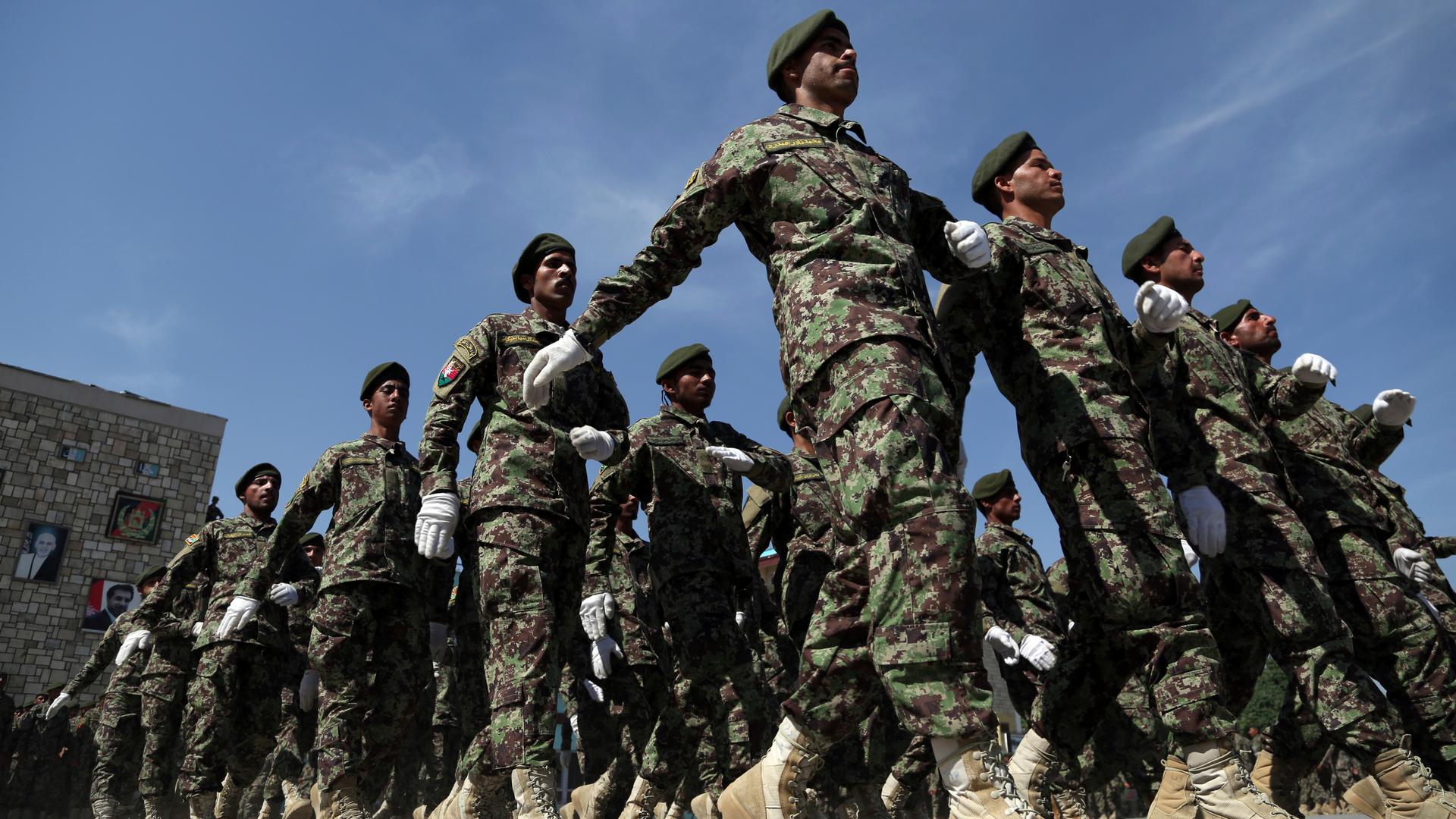A crop of dedicated security chiefs hold the keys to Afghanistan’s future, not the Taliban.
The Afghan National Security Adviser, Hamdullah Mohib, at the United Nations General Assembly, gave a stark warning to the world and the Taliban that the Afghan government was ready for peace but on Kabul’s terms and through the ballot box. He was, of course, referring to the just-completed presidential elections that despite a low turnout passed relatively peacefully.
Sir Nicholas Kay, the Senior Civilian Representative for NATO, paid a public tribute to the Afghan National Defence & Security Forces (ANDSF) saying what a vital role they play in upholding what was by and large a peaceful election.
In the run-up to the actual day, Afghanistan had seen record levels of violence and civilian casualties unprecedented in the almost two-decade war. The fact that the Afghan NSA gave the speech at the UNGA is symbolic of Afghanistan’s situation.
Security remains the keyword for the Afghan state, Mohib earlier this year lambasted the US for ignoring Kabul in any peace process. The ANDSF, which Mohib represented in New York, has become a maligned force accused of corruption and lack of competence however most of this is unjustified and undermines the very mission that NATO and the UN now represent: security and stability in Afghanistan.
Afghan security versus Afghan people
For too long, especially since the Trump administration came to power, the focus has been on a quick exit and a peace deal with the Taliban. The now failed infamous meeting that never took place in Camp David between Trump and the Taliban sent shockwaves through the United States even amongst Trump’s loyal supporters on Capitol Hill.
There has been too much emphasis on how a reformed Taliban accepted by regional powers is key to a secure American exit from Afghanistan. It is almost as if what China, Iran, Pakistan and Russia want matters more than what Afghans want.
An Asia Foundation survey amongst Afghans last year found an overwhelming positivity to democratic trends and all the aspects of political and social life that the Taliban opposed. Taliban approval ratings at best have never crossed 12 percent, something most Afghans go to pains to point out.
What is certain is that both the international community and Afghans want peace – but at what price, and can the ANSF be the key?
ANSF: then and now
The ANSF consist of the Afghan National Army (ANA), the Afghan National Police (ANP) and the National Directorate of Security (NDS). Within these three arms, there are several other forces made up of local and district level forces as well as other security forces.
The ANA and ANP with some justification have taken a lot of criticism over the last decade for corruption, incompetence and negligence. There have also been widespread reports that the Taliban thrive on the corruption of Afghan forces which alienate local villagers and drive them into the austere but fair judicial system of the Taliban.
However, there is a massive exaggeration of this level of corruption, and as former President Hamid Karzai has repeatedly pointed out, it was in many ways the Western contractors that enabled local corruption.
Despite the negativity surrounding the capability of the Afghan forces – there is a new breed of Afghan security leaders that the current NSA Hamdullah Mohib represents.
Mohib, who is Western-educated, grounded in local culture and understands the regional and international security climate, does not want to be taken for a ride. Unlike the Afghan leaders in the early 2000s, he will not sacrifice Afghan sovereignty in return for security aid. Similarly, Amrullah Saleh, the Vice President candidate for Ashraf Ghani, is also another leader who has come vocally out in favour of the importance of the Afghan forces. He does not want regional powers or American leaders to impose the Taliban in Afghanistan.
The current deputy interior minister, Khoshal Sadat was also on the frontlines on election day securing Afghan polling stations and going on social media assuring Afghans of believing in the elections and the Afghan security forces.
Sadat, like Saleh and Mohib, has had a mix of security training abroad as well as learning at the grassroots level combining local support with institutional due diligence.
Respect for the dead and hope for the future
Earlier this year Afghan President Ghani said that since 2014 more than 40,000 Afghan security forces have been killed. This figure dwarfs the number of combined NATO deaths and also put into stark contrast the need to talk to the Taliban when the whole focus has been to build up the capacity of the Afghan state.
Robert Gallimore a former British Army officer who served four tours of Afghanistan including two as a mentor to the Afghan forces says that “Afghanistan exactly like Vietnamisation was not only the transfer of authority but also culpability. The fact is that on the whole at the tactical level the ANA warriors are damn fine fighters. I lived side by side with them as they fought and died, and it saddens me to see people who neither knew them or knew danger blame them.”
The fact remains that those who died did not die for corruption, but rather to make their country like those nations where the monopoly of violence lies solely with the state.
This generation of security leaders in Afghanistan like Saleh, Mohib and Sadat are at the forefront of the new Afghanistan which does not want to surrender to the Taliban. Furthermore, they will not let the US or regional countries decide their fate – for that they are prepared to fight further.
Author: Kamal Alam
Kamal Alam is a Visiting Fellow at the Royal United Services Institute @RUSI_org and is part of the International Security Team @ISS_RUSI.
Source










Discussion about this post